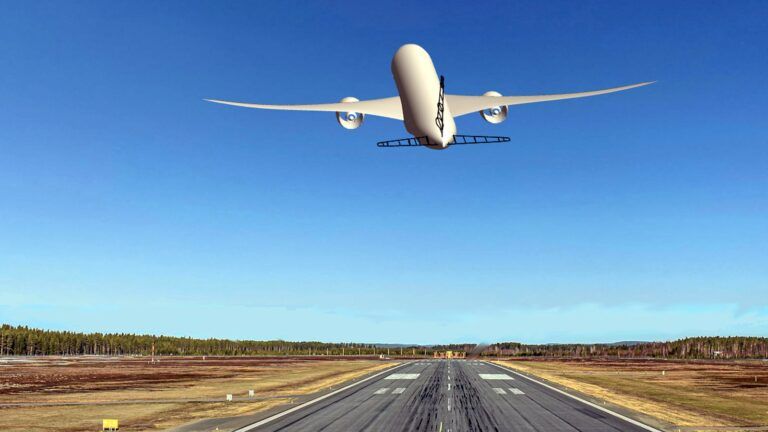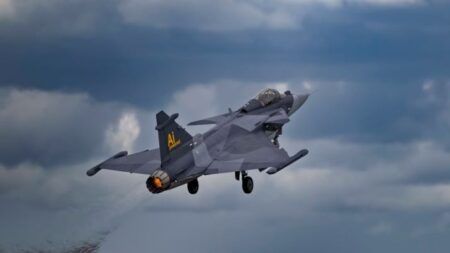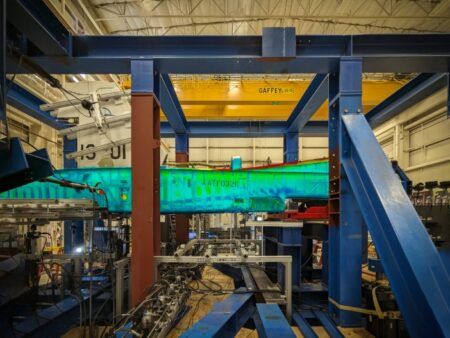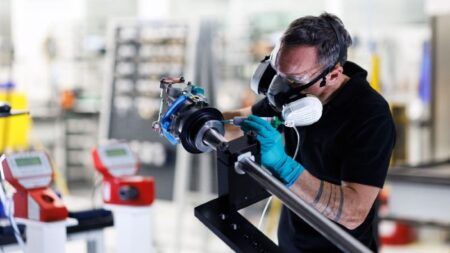German researchers have assessed future wing designs and technologies for future commercial aircraft and found they could enable fuel savings of at least 5%.
Aircraft wings with larger spans are more efficient, but an increase in span makes the wings more susceptible to gusts that occur during flight. Such a wing therefore must be constructed more sturdily increasing its weight.
The three and a half year long INTELWI (Intelligent Wing) project aimed to design a wing with a higher aspect ratio, i.e. significantly slimmer than previous wings, using new technologies and materials and assess their performance using computer modeling and simulation.
Dr Tobias Wunderlich from the DLR Institute of Aerodynamics and Flow Technology and head of the sub-project said, “We designed several wing models and examined them in simulations to find out how the loads acting on the wing can be reduced and how it can have less resistance despite a significantly greater deflection.”
Researchers used intelligent control systems in the designs to help with this and react independently to external influences such as maneuvers and gusts by reducing the load.
For example, within the simulations, researchers used a lidar system to scan the air in front of the aircraft and send signals to the flight control system. In the event of a gust, they could then immediately deflect the control surfaces to reduce the loads and improve passenger comfort.
The control surfaces also minimize the resistance occurring at increased flight speeds or different flight altitudes. This is called an “adaptive wing” because the wing curvature is automatically adjusted to the flight condition.
The performance of the designs and technologies was analyzed in terms of mass, drag, lift, failure cases and maintenance intervals – of a highly stretched, flexible, intelligent wing. The researchers placed particular emphasis on the interaction between the disciplines involved to improve the understanding of the overall system.
“In the end, we decided to design a wing with an aspect ratio of 12.4. This wing of a long-haul commercial aircraft seemed very promising,” says Wunderlich.
The wing is 30% slimmer than current wings. Researchers then produced a detailed design of the entire aircraft based on the slim wing and made it available to the network partners as a reference aircraft.
The wing was then equipped with technologies such as multifunctional control surfaces, central and decentralized control and regulator systems, local sensors and extended flight controller functions for gust and maneuver load reduction – and examined in detail.
Using the control surfaces to reduce air resistance during cruise flight results in a saving of up to 2% in kerosene consumption. During maneuvers, the loads acting on the wing could be reduced by targeted control surface deflections on the trailing edge so that, in combination with the improvements in cruise flight, 4% of fuel could be saved compared to the reference aircraft.
“It is not yet possible to say exactly when these technologies will be ready for series production,” said Wunderlich. “There are still many unanswered questions, but the technologies examined have every chance of being used in future aircraft. We expect that the wings of new aircraft will be load-adaptive wings with a significantly higher aspect ratio.”
INTELWI involved scientists from the German Aerospace Center (DLR) with industrial partners including Airbus and was funded by the German Government.





